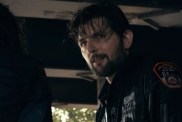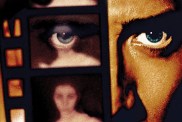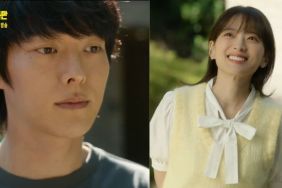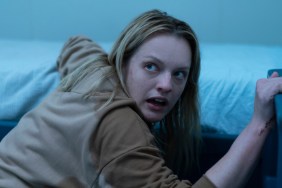This is Lisbeth Salander

Fincher discussing the shot above says, to him, “this is Lisbeth Salander, that’s who she is.” He told Rooney Mara the same thing to which she sarcastically replied, “Well thanks for telling me halfway into the shoot.”

Fincher screened the movie for an audience of about 80 people at Sony and that when it gets to the part where Lisebth goes back to Bjurman’s apartment after the rape, people that had not read the book and didn’t know what was going to happen, were so upset with her for going back they were ready to leave. They had almost written off the character if she was willing to make the same mistake again. But when she whips out the taser and drops him, Fincher says the “ones that didn’t know what was coming were stunned and at the same time it was almost like a reaction to a comedy, they laughed” and were released in the moment.

The bi-sexual scene is one Fincher realizes could have potentially been cut but felt it was important to see Lisbeth smile. Of the scene he says it displays how Lisbeth does get her needs met. He adds that she’s emotionally 13-years-old, but she’s 23 in her daily life. She needs a release and closeness and she has “to find comfort in people that will be safe for her, and the safe ones are strangers.”
The first time Mikael meets Lisbeth was one of the scenes used to audition actresses for Lisbeth.
The following are quotes Fincher gives when describing the character:
“When you’re talking about having to introduce a character like this, she has to ride up in a motorcycle and whip off her helmet and you don’t want it to look like a Clairol commercial. I wanted her to take off this helmet and instead of it being these long, flowing locks she has this hair like a porcupine and to follow her through this office so you really establish what a, sort of, fringe-line human she is.”
“She’s specific to the information age. She not only has a photographic memory, but if she’s going to take a record of something she’s not going to write everything down, she’s going to take pictures of it, and she’s going to carry this camera with her and that camera then she’s able to take those photos and put them on her laptop. But she deals with information in a photographic way as opposed to the written word.
“She only trusts data… she distrusts any men that are bureaucrats and of a certain age.”
On the scene where her backpack is stolen:
“There are a lot of people that see Salander as this kick-ass character, this girl who takes no shit from anyone, and this seen is definitely designed to show that. I always wanted her to be a girl who lashes out, and I like the fact she’s waiting for somebody to do something when this thug steals her backpack, and when no one comes to her aid she deals with the problem in a way she knows how to… I think the thing Rooney understood inherently about the character, [is] the character doesn’t want to have to be that person.”
Locations
The interiors of the cottage Mikael Blomkvist was staying in at Henrik Vanger’s were shot on green screen and Digital Domain went on Google Maps to help figure the vantage points of the camera and used that information along with photographs taken from the location to tie it all together.
The production shut down eight blocks in Uppsala, Sweden (Ingmar Bergman’s hometown) to shoot the parade footage and a few additional scenes.

The final scene was shot in a neighborhood in Stockholm, right above Slussen. Fincher refers to it as “so photogenic” and then reveals the building to the right in the photo above is “actually across the street, about 25 feet, from the building that Larsson used in the novel, the actual address that he gives is right across the street.”
The reason they didn’t use the exact building was because a week after deciding to shoot there a scaffolding went up and they painted it bright orange.
Fincher compares the building they used in the end to the Dakota Building in New York.
A Nod to the Original
andDiscomfort on the Set

There’s a moment in the Swedish movie, where Noomi [Rapace] does this incredibly great thing in the bathroom. She finds this dispenser of soap and she puts soap on her hand and then she washes her mouth out with soap and we knew we needed to acknowledge that was a great thing and we couldn’t touch it, we wouldn’t go near it, but I like the fact that we were able sort of up the stakes. And the odd way she looks at a soap dispenser and decides that’s not enough and then she walks over to the toilet and gags herself and throws up his semen.
When Rooney started screaming during the rape scene Fincher says you could see members of the crew becoming extremely uncomfortable.
And that does it for me. There is plenty more to learn from Fincher’s commentary, which you can own and listen to for yourself on March 20. If you’d like to preorder it from Amazon just click here. Oh, and here’s a little feature preview:









